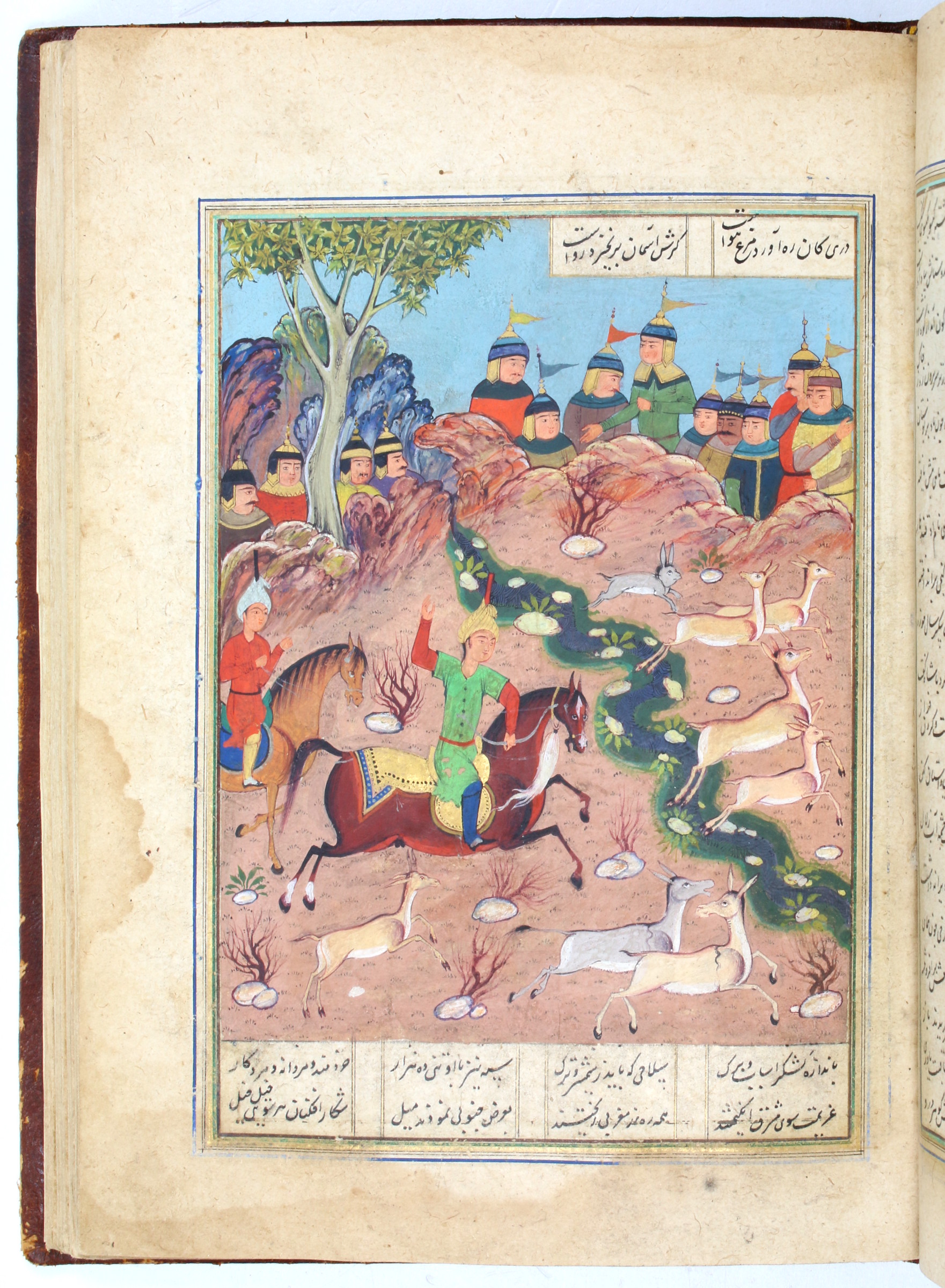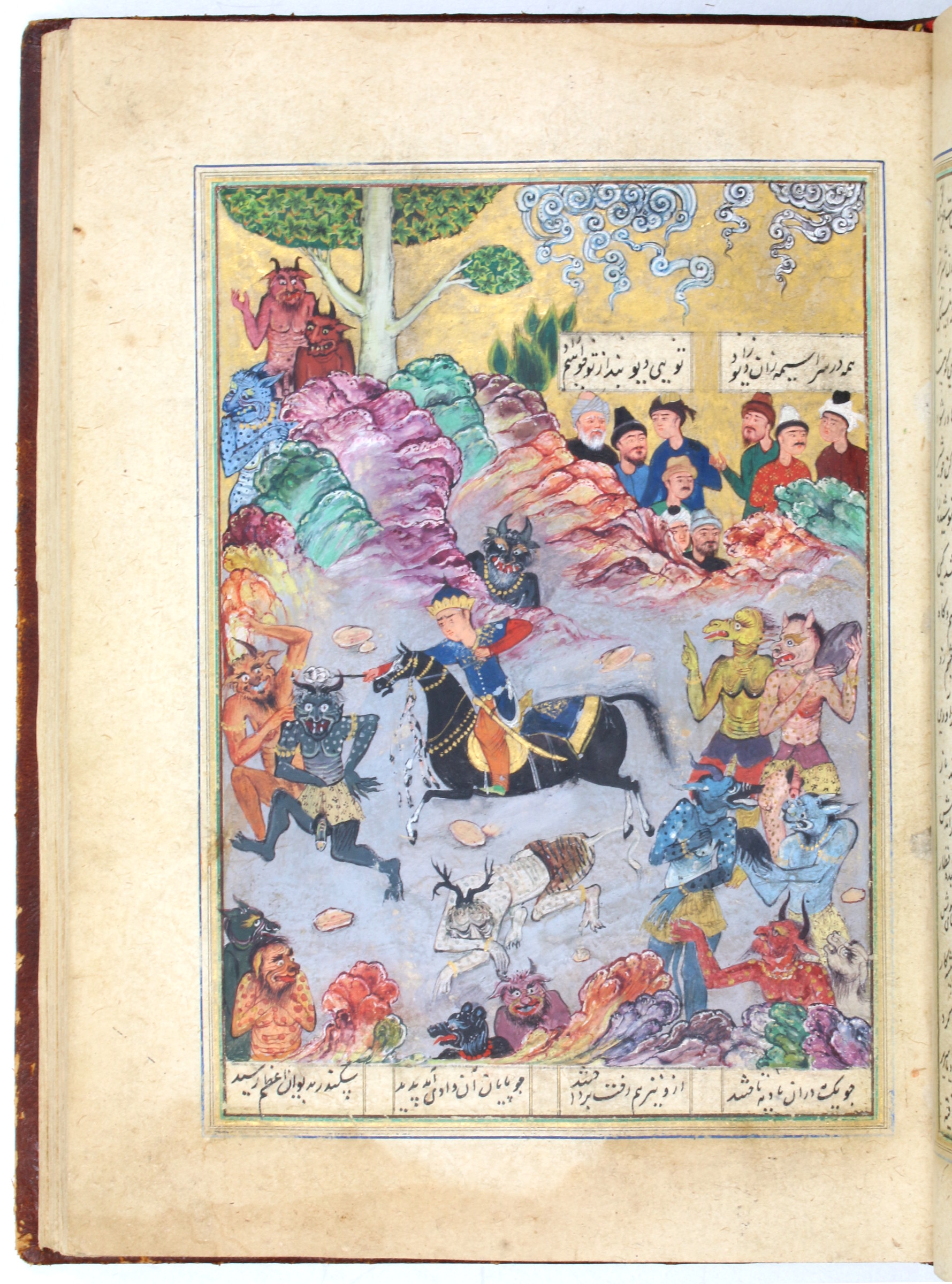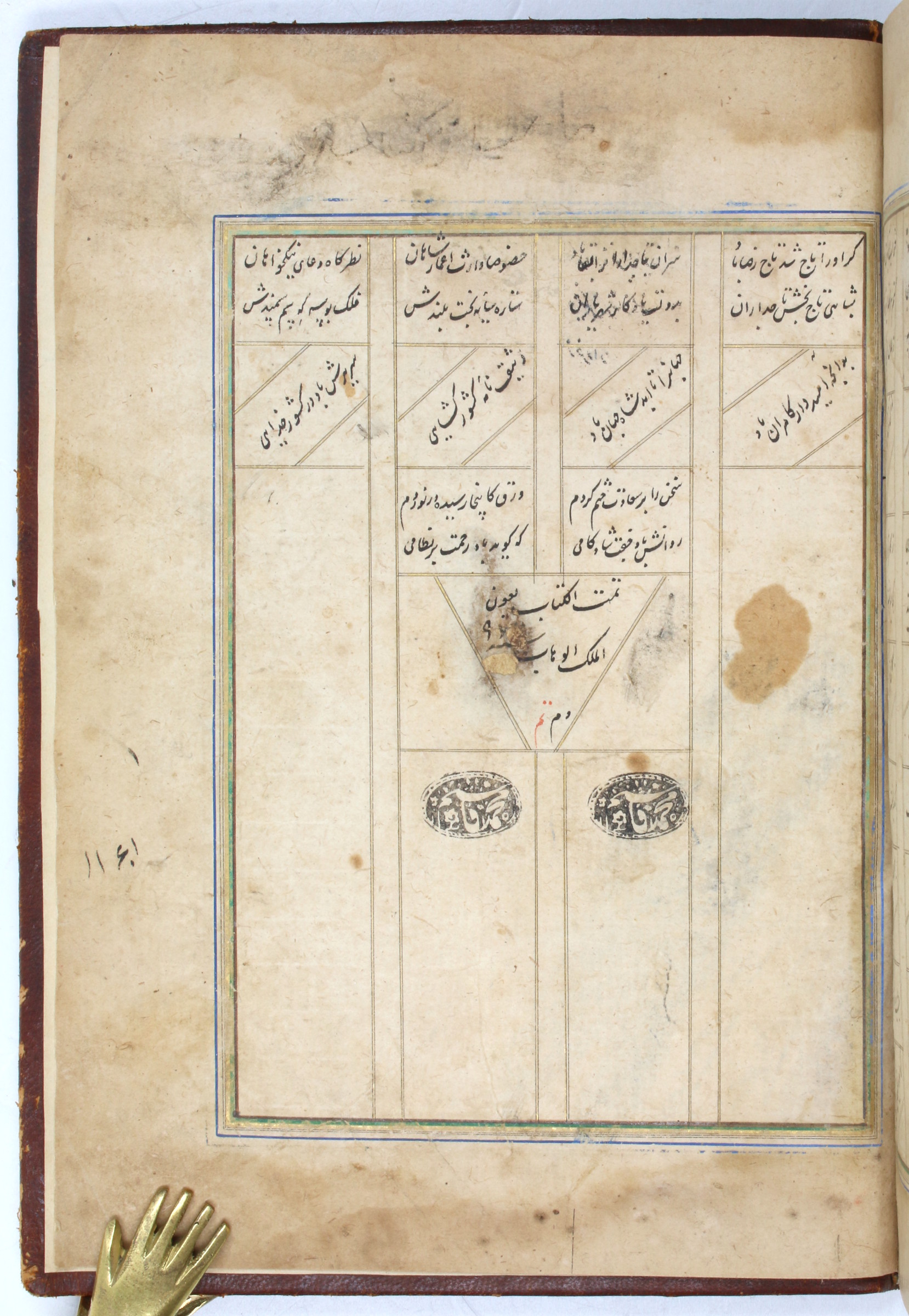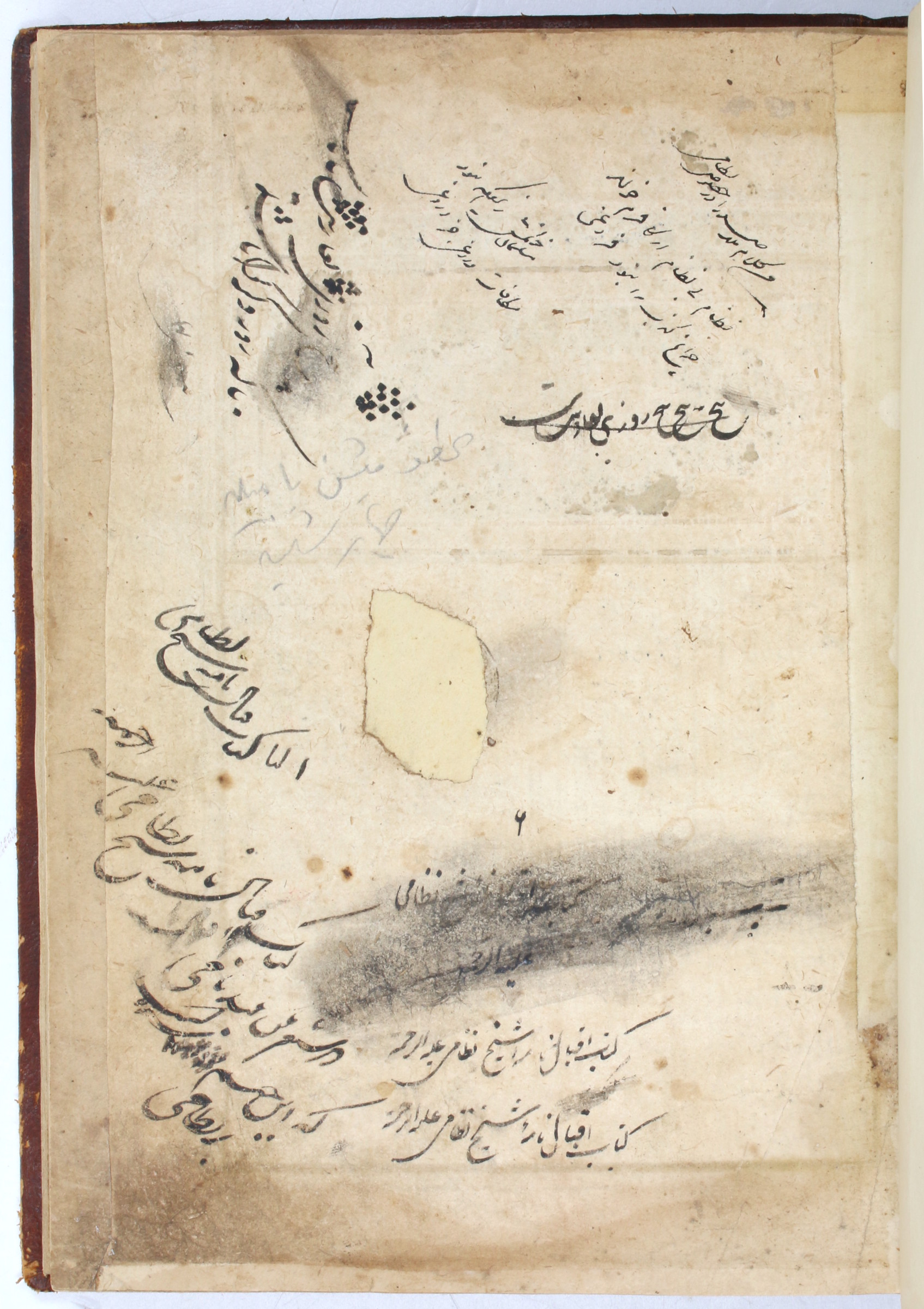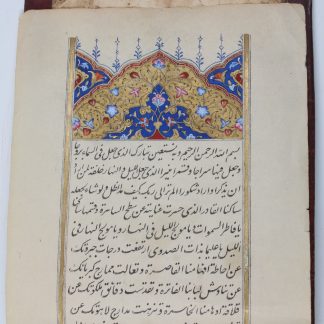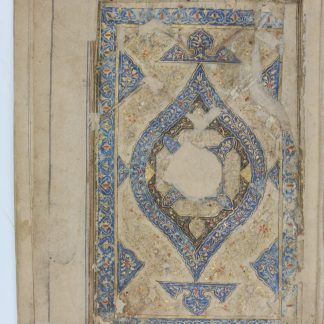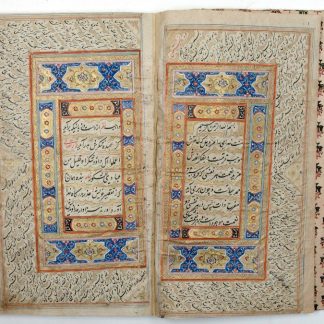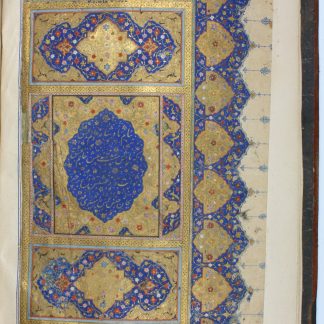Alexander the Great in Persian tradition, with miniatures
Iqbal-nama.
Small 4to (162 x 226 mm). 108 ff. Persian manuscript on paper. Black nastaliq script in four columns, ruled in black, gold, and blue, with titles in red. With three full-page miniatures from the Qajar period, pasted in, and a fine blue and gold 'unwan. 20th century red leather.
€ 25,000.00
Alexander the Great in the 16th century Muslim manuscript tradition: Nizami Ganjavi's "Iqbal-nama", comprising half of his poetic "Eksandar-nama" and illustrated with three fine Qajar miniatures showing hunting scenes and a particularly striking battle with demons or djinns. "The Alexander of the Persian romances is much more colorful than his Western counterpart [...] Nizami celebrates him first as a king and conqueror, then as a sage and a prophet. In 'Iskandarnamah', in addition to being a zealous Moslem, Alexander becomes an ardent lover with numerous wives and concubines" (Southgate).
Paired with the "Saraf-nama", which tells the stories of Alexander's life and travels, the "Iqbal-nama" focuses on Alexander as the scholar-king, who can hold his own in debates with the greatest of Greek and Indian philosophers, follow extensive discussions of the creation of the universe, and set the standard for all kings and princes to follow. This allows Nizami, one of the greatest Persian poets in history, to stretch his talents: "Whereas the Šaraf-nama clearly belongs to the tradition of Persian epic poetry [...] in the Eqbal-nama he shows his talents as a didactic poet, an anecdotist and a miniaturist" (Enc. Iranica).
This manuscript, beautifully illustrated, is a fantastic 16th century example of the "Iqbal-nama" (with later and quite fine Qajar illustrations); its colophon, though with the final digit of its date obscured, dates it to the 970s Hijri (1562-71 CE). Thus, a quite early and beautiful copy, uncommon on the market from this date.
With four Arabic ownership stamps on the opening leaves, one bearing the name Mohammad [Fatih?]. Later from the private collection of Monsieur P., Paris, and inherited.
Light exterior wear, occasional gentle soiling and minor paper repairs; final digit on date on colophon damaged. Quite well preserved, especially the miniatures.
Southgate, "Portraits of Alexander in Persian Alexander-Romances of the Islamic Era", Journal of the American Oriental Society 97 (1977), pp. 278-284. Encylopaedia Iranica VIII, 612-614.

